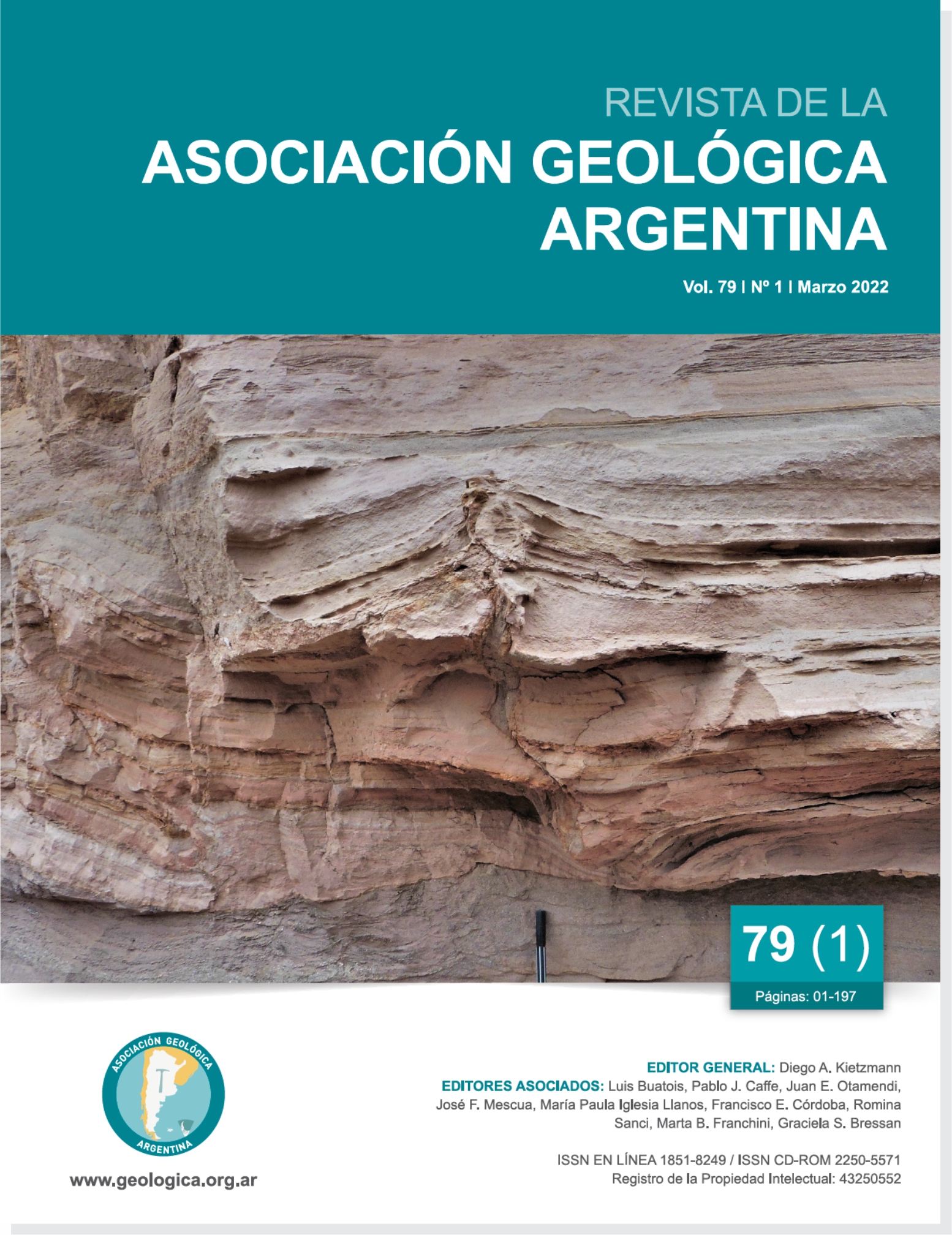Stratigraphic architecture of eolian-fluvial systems: An example of the Santa Cruz Formation (middle Miocene) in the Golfo San Jorge Basin, Argentina
Main Article Content
Abstract
We present a sedimentological study of a 30 meters thick eolian-fluvial succession that belongs to the middle part of the Santa Cruz Formation (Middle Miocene) in exposures of the Ferrays creek (North Flank of the Golfo San Jorge Basin, Chubut). Fourteen lithofacies were identified, eight are associated with subaerial processes, and subaqueous processes deposited six. We identify eight architectural elements, as follows: 1) curved-crested eolian dune, 2) straight crested eolian dune, dry interdune, 4) shallow lake, 5) prograding lobes, 6) ephemeral fluvial channel, 7) perennial fluvial channel, and 8) sand sheet. Based on the eolian architecture, bedforms, and relation between the water level and the surface, two depositional systems separated by a supersurface were interpreted. The depositional system I is interpreted as a wet eolian system, and depositional system II is a dry eolian system reflecting gradual dryness through the succession. The measurements of the natural content of radioactivity using a portable device and the statistical treatment of the data through ANOVA allow differentiating the interpreted sub-environments. However, the lithological uniformity of the study succession makes it challenging to make accurate predictions. Although the study has documented the interaction between eolian and fluvial systems, due to its local character, the relative importance of allogenic controls in the dryness trend identified requires new studies involving wider areas and additional techniques.
Article Details

This work is licensed under a Creative Commons Attribution-NonCommercial 4.0 International License.
Nota de copyright
Los autores conservan los derechos de autor y garantizan a la revista el derecho de ser la primera publicación del trabajo licenciado según una licencia de atribución Creative Commons que permite a otros compartir el trabajo con el reconocimiento de la autoría y de la publicación en la que se publicó por primera vez.
Declaración de privacidad
Los nombres y direcciones de correo electrónico introducidos en esta revista se usarán exclusivamente para los fines declarados por esta revista y no estarán disponibles para ningún otro propósito u otra persona.

